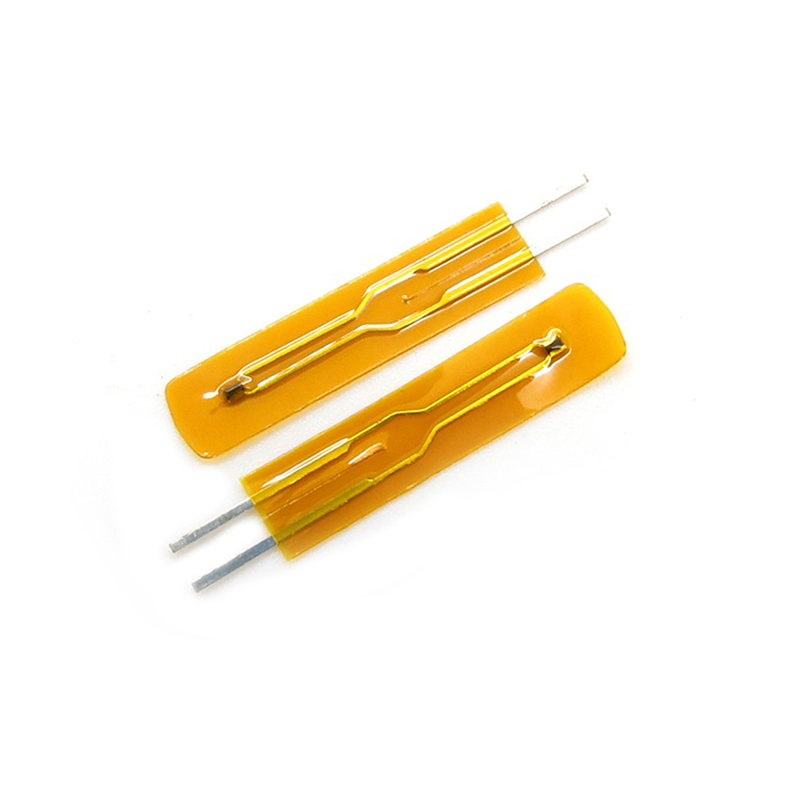 1004,West-CBD,No.139 Binhe Rd,Futian District,Shenzhen, China Post Code:518048
1004,West-CBD,No.139 Binhe Rd,Futian District,Shenzhen, China Post Code:518048
 +86-18682200597
+86-18682200597
 sales@szhaiwang.com
sales@szhaiwang.com
 1004,West-CBD,No.139 Binhe Rd,Futian District,Shenzhen, China Post Code:518048
1004,West-CBD,No.139 Binhe Rd,Futian District,Shenzhen, China Post Code:518048
 +86-18682200597
+86-18682200597
 sales@szhaiwang.com
sales@szhaiwang.com
source:Industry News release time:2022-04-13 Hits: Popular:Infrared sensing module

The thermistor doesn't actually "read" anything, rather the thermistor's resistance changes with temperature. How much the resistance changes depends on the type of material used in the thermistor.Unlike other sensors, thermistors are non-linear, which means that the points on a graph representing the relationship between resistance and temperature do not form a straight line. The location of the lines and how much they vary depends on the construction of the thermistor
Besides thermistors, several other types of temperature sensors are used. The most common are resistance temperature detectors (RTDs) and integrated circuits (ICs), such as the LM335 and AD590 types. Which sensor is best for a particular application is based on many factors. The table below briefly compares the advantages and disadvantages of each method.
Temperature Range: The approximate temperature range over which the sensor type can be used. Some sensors work better than others over a given temperature rangeRelative Cost: Relative cost as these sensors compare to each other. For example, thermistors are cheap relative to RTDs, in part because the material of choice for RTDs is platinum.Time Constant: The approximate time it takes to change from one temperature value to another. This is the time (in seconds) for the thermistor to reach a 63.2% temperature difference from the initial reading to the final reading.Stability: The ability of the controller to maintain a constant temperature based on temperature feedback from a sensor.Sensitivity: The degree of response to temperature changes.
What are the shapes of common thermistorsThermistors come in a variety of shapes - discs, chips, beads or rods and can be surface mounted or embedded in a system. They can be encapsulated in epoxy, glass, baked phenolic or painted. The optimal shape usually depends on the material being monitored, such as a solid, liquid or gas.For example, bead thermistors are ideal for embedded devices, while rods, disks, or cylinder heads are best for optical surfaces. Thermistor chips are usually mounted on a printed circuit board (PCB). There are many different shapes of thermistors, some examples are
Choose a shape that maximizes contact with temperature-monitored equipment. Regardless of the type of thermistor, the connection to the device being monitored must be made with a high thermal conductivity paste or epoxy. It is usually important that the paste or glue is not conductive.
The main purpose of a thermistor is to measure the temperature of a device. In a temperature control system, the thermistor is a small but important part of a larger system. The temperature controller monitors the temperature of the thermistor. Then tell the heater or cooler when to turn on or off to maintain the temperature of the sensor.In the diagram below, an example system is shown with three main components for regulating the temperature of the device: a temperature sensor, a temperature controller, and a Peltier device (labeled here as a TEC or thermoelectric cooler). The sensor head is connected to a cooling plate, which needs to be maintained at a specific temperature to cool the device, and the wires are connected to a temperature controller. The temperature controller is also electrically connected to the Peltier device, which heats and cools the target device. A heat sink is attached to the Peltier device to help dissipate heat.
The job of the temperature sensor is to send temperature feedback to the temperature controller. The sensor has a small amount of current flowing through it, called the bias current, sent by the temperature controller. The controller cannot read the resistance, so a control voltage must be generated by applying a bias current across the thermistor using a current source, which converts resistance changes to voltage changes.The temperature controller is the brains of this operation. It takes the sensor information, compares it to the information needed by the unit to be cooled (called the setpoint), and adjusts the current through the Peltier device to change the temperature to match the setpoint.The location of the thermistor in the system affects the stability and accuracy of the control system. For best stability, the thermistor needs to be placed as close as possible to the thermoelectric or resistive heater. For best accuracy, the thermistor needs to be close to the device requiring temperature control. Ideally, the thermistor is embedded in the device, but it can also be attached using thermal paste or glue. Even if the device is embedded, use thermal paste or glue to eliminate air gaps.The diagram below shows two thermistors, one directly connected to the device and one remote or remote. Thermal lag time can significantly reduce the accuracy of temperature measurements if the sensor is too far from the device, and placing the thermistor too far from the Peltier device can reduce stability.
Read recommendations:
NTC application.Pyroelectric infrared sensor module Processing
Popular Recommended Products
PIR Lens 8603-4
2021-12-09PIR Lens 7704-3
2021-12-09HW8002PIR sensor module
2021-12-09Φ7mm size
2021-11-27HW-XC511 Micorwave sensor module
2024-04-07PIR Lens 8308-2
2021-12-09PIR Lens 8309-1
2021-12-09Φ25mm size
2021-11-27PND103F3950FTU102
2021-11-27HW-XC509 microwave sensor module
2021-12-07PIR300B Analog sensor
2021-12-09The Application of NTC Thermistors in Far Infrared Heaters.Pyroelectric infrared sensor lens
2023-09-04NTC thermal resistance symbol.Moving object detection module
2023-03-28Discussion on the Application of Fast Response NTC Thermistors.Light-dependent resistor
2023-09-08Models of NTC thermistors used in shoe dryers/shoe polishers
2022-07-19MF52B series enamelled wire NTC thermistor
2022-11-24Air fried pot NTC temperature sensor.Automatic machine mirror Factory
2023-03-08NTC Medical Sensors.magnifier reader
2023-07-03What is NTC Open Thermostat
2022-05-25Super fast charge temperature control protection NTC thermistor.Light-dependent resistor price
2022-08-24How do NTC thermistors limit surge currents?Infrared sensing module
2023-06-20
szhaiwang4@hotmail.com
+86-18682200597
sales@szhaiwang.com